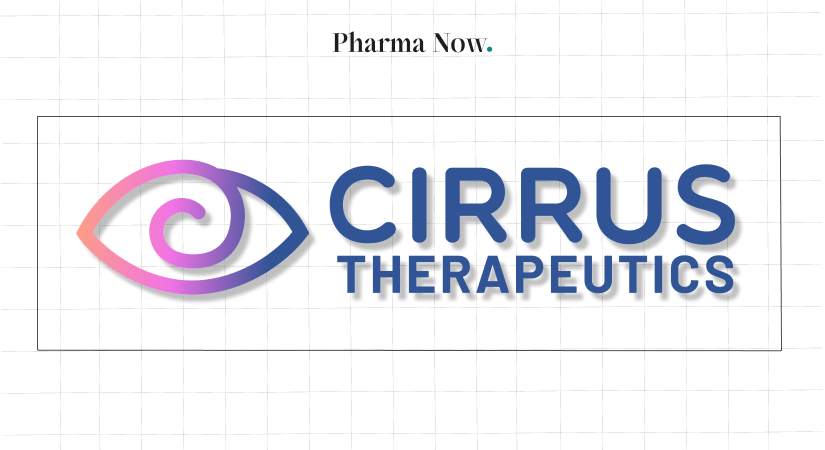Cirrus Therapeutics Secures $11 Million Seed Funding To Advance Groundbreaking Ocular Gene Therapy Intended To Potentially Reverse Root Cause Of Dry AMD
Cirrus Therapeutics raises $11M to advance gene therapy targeting IRAK-M for dry age-related macular degeneration (dry AMD).
Breaking News
Oct 03, 2025
Simantini Singh Deo

Cirrus Therapeutics, a biotech company focused on ocular immunology, announced the successful closing of an $11 million seed financing round to advance its pipeline of gene and cell therapies for chronic blinding diseases. The financing round was led by ClavystBio, with participation from Polaris Partners and SEEDS. Cirrus plans to use the funds to progress its lead program into IND-enabling studies. The program involves a novel adeno-associated virus (AAV) ocular gene therapy designed to address a recently validated cause of dry age-related macular degeneration (dry AMD)—the loss of IRAK-M protein, an essential immune regulator in retinal cells.
Dry AMD is the leading cause of vision loss in individuals aged 50 and older, affecting over 200 million people worldwide, a number expected to rise to 288 million by 2040. The disease progressively destroys the macula, the central part of the retina responsible for sharp, detailed vision. Early symptoms include difficulty seeing in low light and mild blurriness, which gradually worsen into a central blind spot, severely impacting daily activities such as reading, driving, and recognizing faces.
Professor Andrew Dick, Co-founder and Chief Scientific Advisor of Cirrus, as well as Head of Academic Unit of Ophthalmology, University of Bristol, and the Duke Elder Chair and Director of Institute of Ophthalmology, University College of London (UCL), stated, “Current approved treatments for dry AMD, and much of the therapeutic pipeline, target a single disease-implicated pathway — primarily the complement cascade. To date, however, existing approaches have yet to demonstrate functional benefits. Replenishing IRAK-M expression offers an exciting opportunity to target an underlying driver of retinal degeneration – aging itself – thwarting the multi-pathway activity that leads to AMD and preventing or reversing vision loss.”
Ying Kai Chan, PhD, Chief Executive Officer and Co-founder of Cirrus Therapeutics, mentioned, “We are thrilled to have the support of our committed investor syndicate as we work to deliver a safe, effective and durable treatment for a disease that robs millions of people of their vision, independence and quality of life as they age. By pairing the disease-modifying IRAK-M target with a modality that would enable a one-time treatment, we aim to protect and preserve vision. This not only represents a major medical advance to address a highly prevalent blinding disease, but also heralds a paradigm shift for the application of gene therapy, for which approved products have been reserved for rare, monogenic diseases thus far.”
Khoo Shih, PhD, Chief Executive Officer of ClavystBio, remarked, “Cirrus’ bold approach focuses on pioneering novel yet well-validated biology from human genetics and aging data to deliver transformational impact in dry AMD, a disease of high unmet need. At ClavystBio, we are committed to backing Cirrus and its talented founders Kai and Andrew to advance this important therapy toward the clinic, and build its earlier stage pipeline.”
In June 2024, Cirrus Therapeutics, in collaboration with the University of Bristol and the UCL Institute of Ophthalmology, published research in Science Translational Medicine identifying IRAK-M as a key regulator of ocular health and a potential therapeutic target for dry AMD. IRAK-M is predominantly expressed in retinal pigment epithelial (RPE) cells and maintains immune balance in the retina. Its levels naturally decline with age and drop further in patients with dry AMD, leaving the retina vulnerable to chronic inflammation, mitochondrial dysfunction, and oxidative stress that drive disease progression. Preclinical studies showed that restoring IRAK-M levels significantly protects against retinal degeneration.
Gene therapy presents a particularly promising approach for ocular diseases. A single treatment for dry AMD could provide a long-lasting effect, in contrast to the ongoing monthly or bi-monthly intraocular injections required by current therapies. The eye’s small size allows for lower doses, making manufacturing and cost more efficient and enabling broader patient access. Additionally, as a contained and immune-privileged tissue, the eye reduces the risks of off-target effects and immune responses, challenges often associated with systemic therapies.
